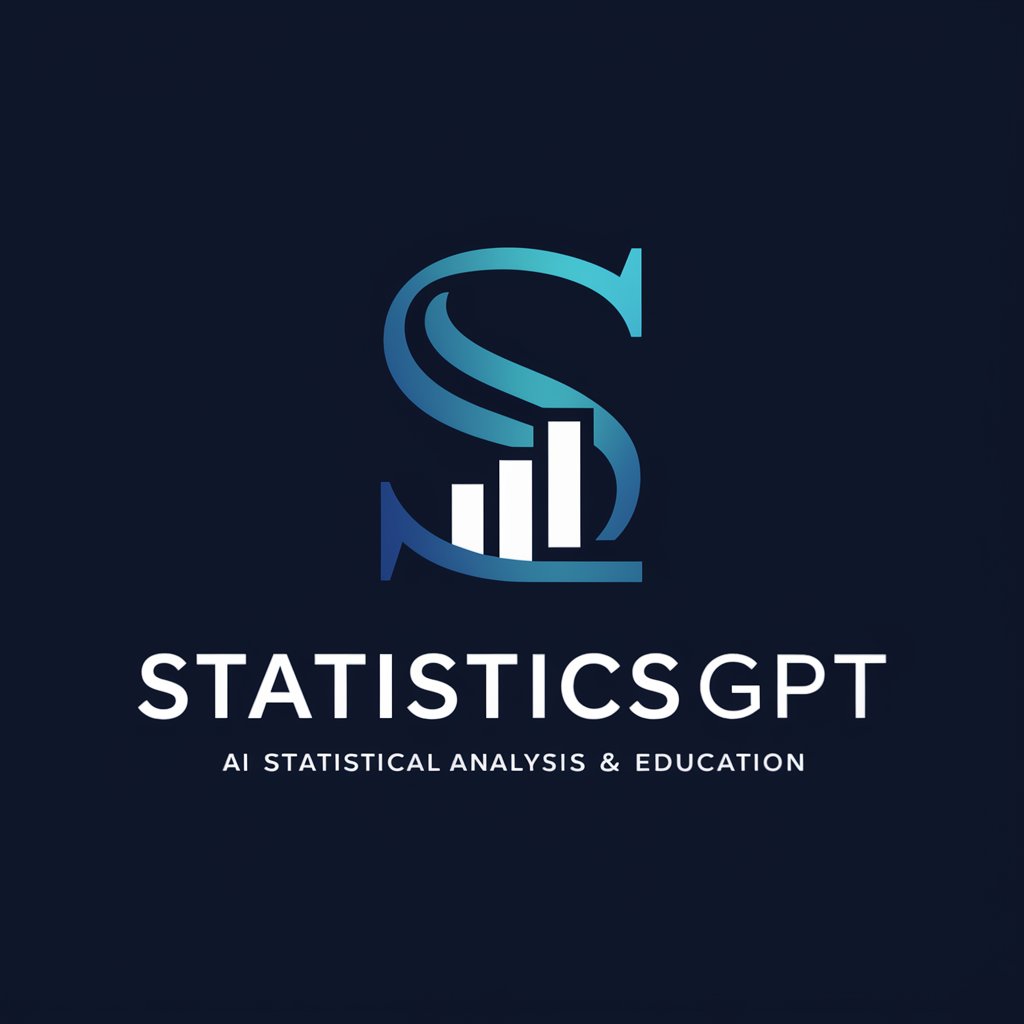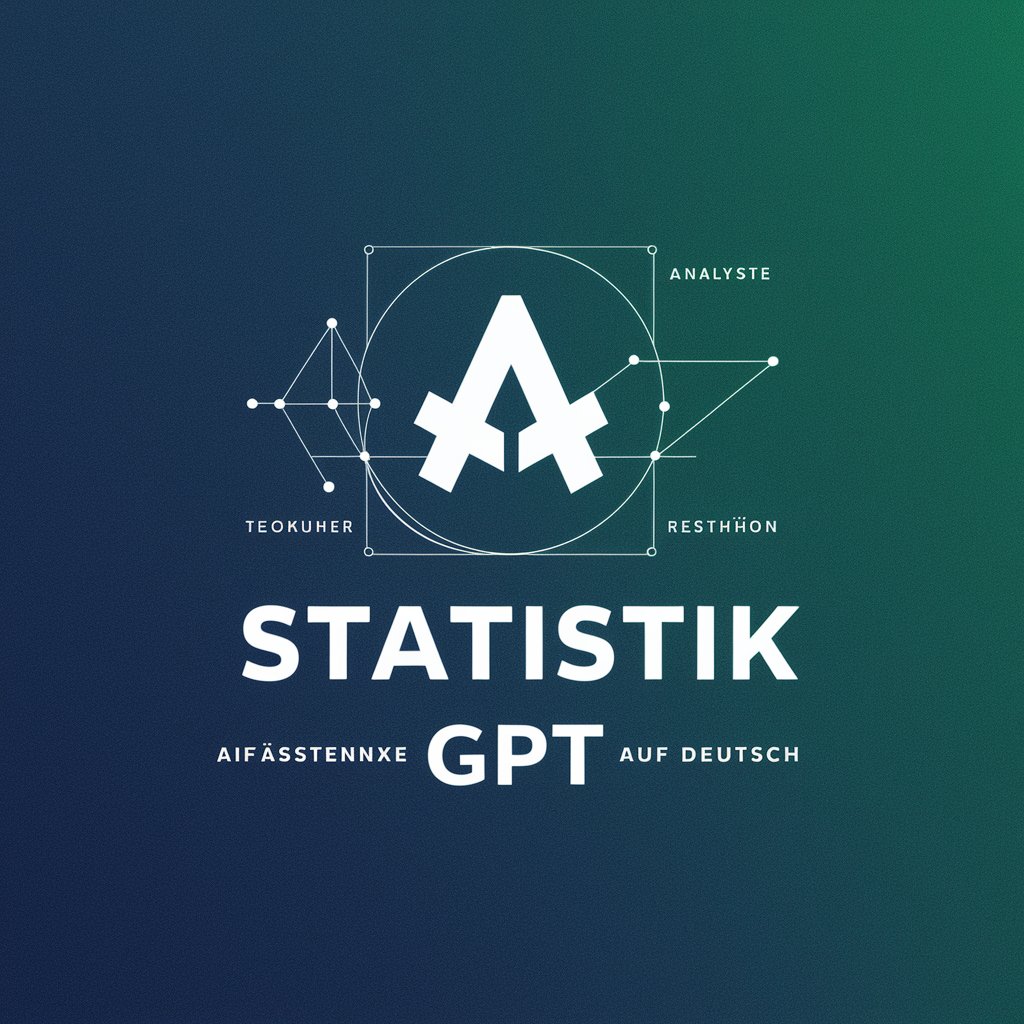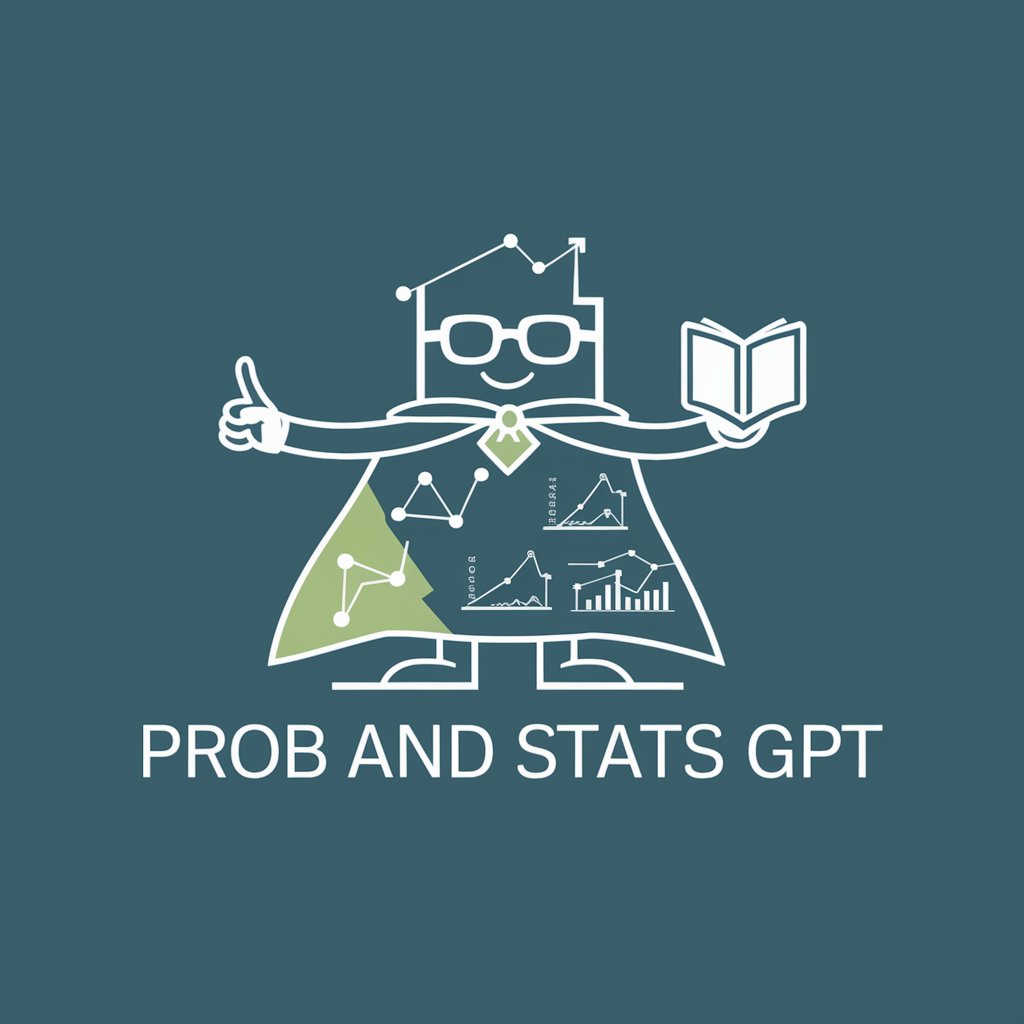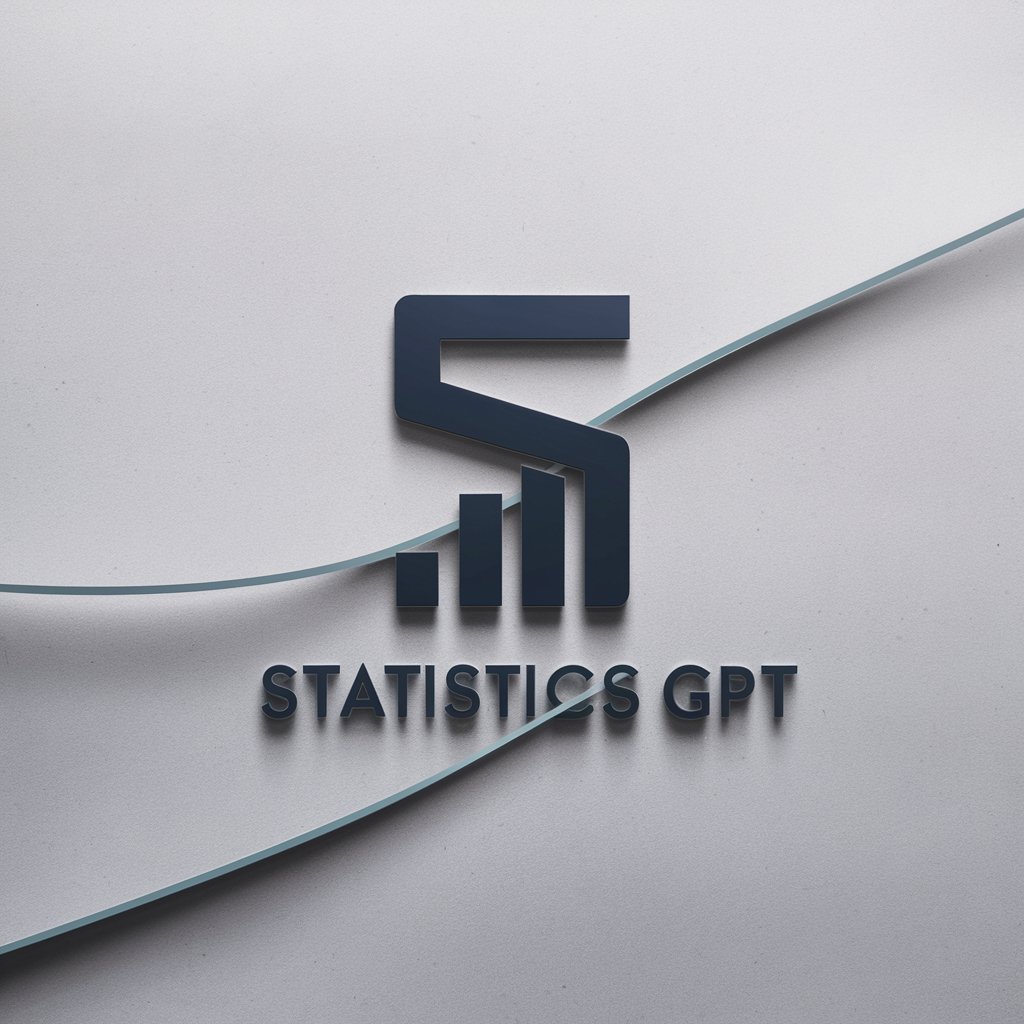
StatisticsGPT - Statistical Analysis Tool

Welcome to StatisticsGPT, your expert in statistical analysis and data interpretation.
Empowering Analysis with AI-Powered Statistics
Explain the significance of p-values in hypothesis testing.
Describe the differences between linear and logistic regression.
What are the key assumptions of ANOVA?
How do you interpret a confidence interval in statistical analysis?
Get Embed Code
Introduction to StatisticsGPT
StatisticsGPT is an advanced AI model tailored for statistical analysis and educational purposes. It is designed to offer expert-level statistical analysis, interpret data with precision, and explain complex statistical concepts in an easily understandable manner. The core objective of StatisticsGPT is to serve as a virtual statistical advisor and educator, capable of handling a wide array of statistical computations, data analysis tasks, and educational functions. For instance, if a researcher is analyzing data from an experiment to determine if a new drug is effective, StatisticsGPT can perform the necessary statistical tests, such as t-tests or ANOVAs, interpret the results, and explain the significance of the p-values in a comprehensive manner. Similarly, for a student struggling with statistical concepts, StatisticsGPT can break down topics like hypothesis testing or regression analysis into simple, digestible explanations, enhancing their learning experience. Powered by ChatGPT-4o。

Main Functions of StatisticsGPT
Statistical Analysis Expertise
Example
Analyzing clinical trial data to evaluate drug efficacy.
Scenario
A biostatistician uploads clinical trial data, seeking to understand if there is a significant difference in recovery rates between patients receiving a new drug versus a placebo. StatisticsGPT selects the appropriate statistical test, performs the analysis, and provides a detailed interpretation of the results, including confidence intervals and p-values, offering insights into the drug's effectiveness.
Educational Resource
Example
Explaining the concept of Bayesian statistics to a student.
Scenario
A student, confused about Bayesian statistics and its applications, asks StatisticsGPT for clarification. The AI breaks down the subject into fundamental principles, provides examples of Bayesian inference, and explains how prior knowledge is updated with new data, making complex ideas accessible and understandable.
Data Analysis
Example
Conducting a market research analysis for a new product.
Scenario
A market researcher uploads survey data from potential customers to understand preferences for a new product. StatisticsGPT analyzes the data using descriptive statistics, correlation analysis, and predictive modeling to identify key trends and preferences, thereby guiding the product development and marketing strategy.
Ideal Users of StatisticsGPT Services
Researchers and Academics
This group includes individuals engaged in empirical research across various domains such as medicine, psychology, economics, and natural sciences. They benefit from StatisticsGPT's ability to perform complex data analysis, interpret results, and provide detailed explanations, thereby enhancing their research quality and efficiency.
Students and Educators
Students learning statistics and educators teaching statistical concepts find StatisticsGPT invaluable. It serves as a dynamic educational tool, offering personalized explanations, examples, and answers to questions, which can significantly improve the learning and teaching experience.
Industry Professionals
Professionals in sectors like finance, marketing, healthcare, and technology who rely on data-driven decision-making can utilize StatisticsGPT for analyzing datasets, forecasting trends, and making informed decisions. Its ability to explain statistical outcomes clearly also aids in presenting findings to stakeholders who may not have a statistical background.

How to Use StatisticsGPT
1
Start your journey by visiting yeschat.ai, where you can access a free trial of StatisticsGPT without the need to sign up or subscribe to ChatGPT Plus.
2
Prepare your data set in a clean, organized format, ensuring it's ready for analysis. This might include cleaning the data to remove any errors or irrelevant information.
3
Upload your data directly into the StatisticsGPT interface. The platform supports various data formats, including CSV and Excel, for ease of use.
4
Specify your statistical analysis requirements. This could range from basic descriptive statistics to complex inferential statistics, depending on your project needs.
5
Review the analysis provided by StatisticsGPT. The tool will offer detailed explanations, interpretations, and insights based on your data, using a vast array of statistical methods.
Try other advanced and practical GPTs
Pyramidal
Structure Your Thoughts, Effortlessly

CodeContratGPT Maroc
Navigating Moroccan law with AI

媽媽的兒童床前繪本製作版_第二集
Craft personalized bedtime stories with AI.

飛鳥馬トキ
Your Personalized AI Companion for Every Need

Vite ma philo !
Unleashing insights with AI-powered philosophy.

Operational Discipline AI
Enhancing operations with AI-driven discipline

Scales4Research Scholar by Professor Rajibul Hasan
Empowering Research with AI-Driven Scale Crafting

Mindful Me
Personalized mindfulness at your fingertips.

Feed Me Cheap
Delicious meals, slim budget, AI-powered.

Hi-Funko
Transform images into Funko Pop art with AI.

💥 Blahster / Blast me a Quote, a Pun, a Joke 💥
Ignite creativity with AI-powered humor

Mecànic del MG EHS
AI-powered MG EHS Assistance

Frequently Asked Questions about StatisticsGPT
What data formats does StatisticsGPT support?
StatisticsGPT is compatible with several data formats, including CSV, Excel, and JSON, facilitating easy data uploads and seamless integration into your workflow.
Can StatisticsGPT handle large data sets?
Yes, StatisticsGPT is designed to efficiently process and analyze large data sets, employing advanced algorithms to handle complex analyses without compromising on speed or accuracy.
How does StatisticsGPT ensure data privacy?
StatisticsGPT prioritizes user privacy by employing robust data encryption and secure processing practices, ensuring that all uploaded data is used strictly for the intended analysis and not stored or shared.
Can I use StatisticsGPT for hypothesis testing?
Absolutely. StatisticsGPT excels at hypothesis testing, offering comprehensive support for various tests, including t-tests, chi-square tests, and ANOVA, complete with detailed interpretations of the results.
Does StatisticsGPT provide guidance on selecting statistical methods?
Yes, StatisticsGPT offers recommendations on appropriate statistical methods based on the nature of your data and analysis objectives, ensuring that you apply the most effective techniques for your specific needs.





